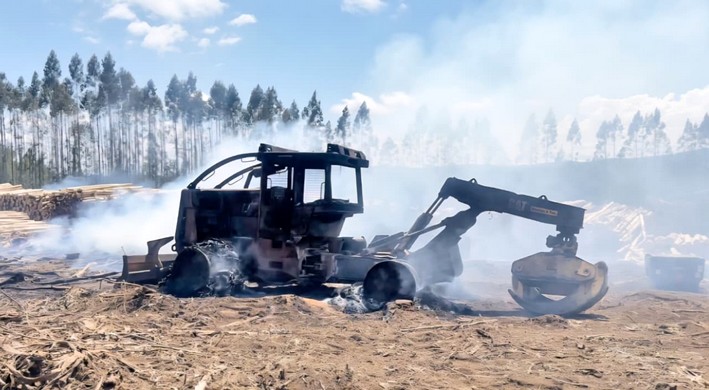Uncertain Future for the Forestry Sector
The outlook and projections are not encouraging for a sector that has historically contributed significantly to the country's economy, accounting for between 2% to 3% of GDP. This year, 2023, a decline in exports is projected, which will inevitably have a chain reaction on forestry contractors, small and medium-sized timber businesses, local economies, and all related stakeholders such as lumberyards, taxi drivers, furniture makers, and even the woman selling seafood tortillas in Laraquete.
Every afforestation project has a duration of at least 15 to 20 years for introduced species, and for native species, the timeline can extend to 60 or even 100 years. Forestry investment projects require a long-term vision. Therefore, whatever we fail to do today will be missing in 15 years—or, in the case of native species, in 60 years.
For over a decade, the sector has seen no approved legal initiatives aimed at correcting, improving, incentivizing, and promoting forestry activities to serve as a foundation and support for new forestry projects or industries that encourage the use of wood and forest-derived products.
The lack of afforestation incentives has led to a decline in afforestation rates, from an average of 35,000 to 40,000 hectares per year up to 2012, to an average of just 2,180 hectares per year over the last 10 years (Conaf, 2022).
If we examine the case of native forests, with a potential commercial resource of 4 million hectares, Law No. 20.283, enacted in 2008, sought to protect and recover native species in natural forests suitable for commercial management. What has been the result? Over the past 11 years, this law has subsidized the management of an average of 4,214 hectares per year (Conaf, 2022), with insufficient subsidy values ($/hectare) and numerous administrative and control issues.
Legal instruments that are not reformed end up having the opposite effect of their original intent. While the sustainable management of these natural forests and plantations is a powerful social tool for improving the well-being and livelihoods of thousands of small rural landowners, the state has fallen behind, remaining stagnant as years pass without revitalizing the greenest sector of our economy.
It is time for the state, through the Ministry of Agriculture and the National Forestry Corporation, to begin implementing the Forestry Policy defined for the 2015-2035 period—agreed upon by trade groups, academia, and the government—which aims to develop a dynamic, inclusive, environmental, local, and social forestry model. The reality is that since its publication in the official gazette on April 26, 2017, the forestry policy has shown no significant progress, and its enactment has not been a real contribution to the sector.
Our forestry institutions should adopt the phrase of a global responsible forest management certifier: "Forests for all, forever." In other words, we should not legislate to lock away our natural forests and eliminate incentives for afforestation or reforestation, restricting the establishment of slow- and fast-growing plantations. Instead, we must legislate to manage our natural resources with environmental, social, and economic sustainability in mind, ensuring they remain available for future generations.
If we add exogenous variables like terrorist violence—which has cornered forestry contractors—and intentional vegetation fires to the stagnation in public forestry policies, we can conclude that from the Maule region southward, the forestry industry faces an UNCERTAIN FUTURE.

















